No products in the cart.
Morning Walks
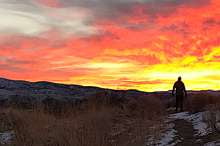
Up to Table Rock
Story and Photos by Tom Lopez
Darn, it’s cold,” I blurt but my wife Laurie ignores this statement of the obvious. She’s breaking trail a couple of yards ahead of me up the snow-covered hillside. It’s a little before 7 AM on a snowy January day in 2022 and we’re trudging up a slope above Boise toward a small peak I call Homer’s Nipple. The snow, the cold, and the wind be damned, we are taking our morning walk. We loop over the Nipple as a stiff breeze buffets us, and then we follow the ridge west down into a saddle and climb to the summit of Table Rock. By the time we return to our house, the sky has turned a pale grey and we have covered four miles with six hundred feet of elevation gain.
When I was younger, big mountains enthralled me. Morning walks were not my thing. Jogging at lunchtime kept me in shape for weekend climbing. And then somehow I reached my seventies and the pandemic came along. As its accompanying lockdowns swept us and the world, my climbing trips were put on hold. Unable or unwilling to stay stranded in the house, I followed the advice of both Laurie and Hippocrates that, “Walking is man’s best medicine,” and we instituted an almost daily ritual of a morning walk to Table Rock and the surrounding foothills. Many Table Rock trails are part of Boise’s Ridge to Rivers Trail System. From our home in the Warm Springs Mesa subdivision, there are many official and unofficial trails available for hikes in the foothills.
The late J.H. Wise and his family started developing our neighborhood long before I moved to Boise. The Wises were farsighted, and well before Ridge to Rivers was visualized, they provided foothills access to both their undeveloped lands and to state and city lands adjoining their property. When I moved to Boise in 1986, the neighborhood’s foothill access drew me there, and I’ve lived here ever since.
Living below Table Rock for thirty-six years has allowed me to use the rock as an outdoor gymnasium. I’ve run, ridden my mountain bike, and hiked up it hundreds of times from many directions. Yet until COVID came along, I never considered it a place to walk simply for the sake of walking and to experience each day’s sunrise. It’s now more clear than ever to me that this landsape has a way of changing almost unnoticeably as the seasons come and go. No two days are alike and no two sunrises are alike. Most of our walks bring new experiences and new discoveries.
I give all due respect to the Boise River but for me, Table Rock is undoubtedly the city’s preeminent physical landmark. It is also a historical landmark. Table Rock’s history encompasses the lives of many Boiseans, past and present. Its bold face rises up behind the Old Idaho Penitentiary to a plateau-like summit capped by a giant cross. It is and has been a popular destination for Boiseans dating to the city’s earliest days. Indeed, the Rock attracts humans to its summit like moths attracted to light.
Bob Boyles climbs the quarry wall at Table Rock in the 1970s. Bob Boyle.
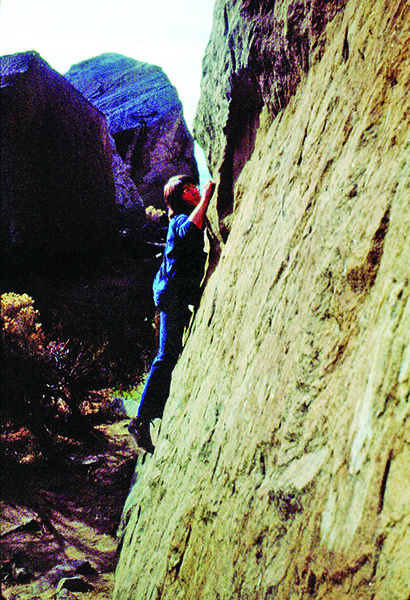
A buck near Table Rock.
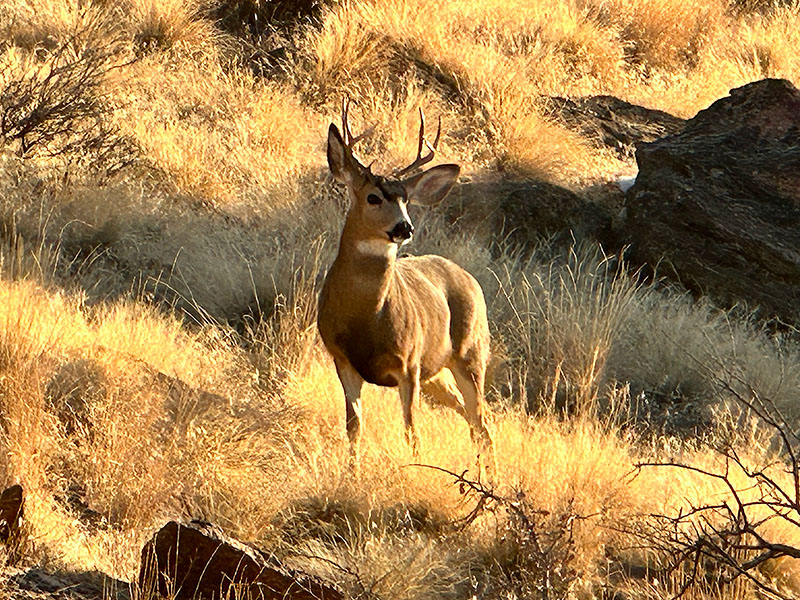
On the climb.
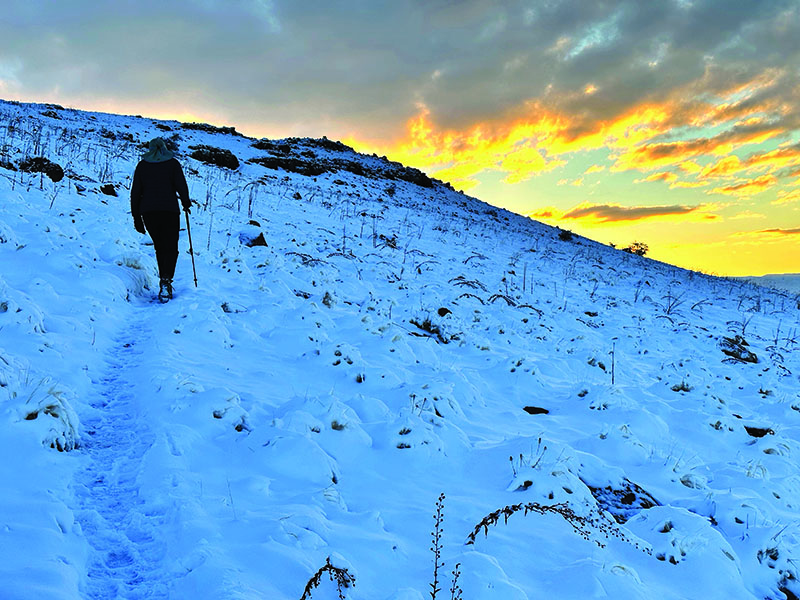
The famous cross on the rock.
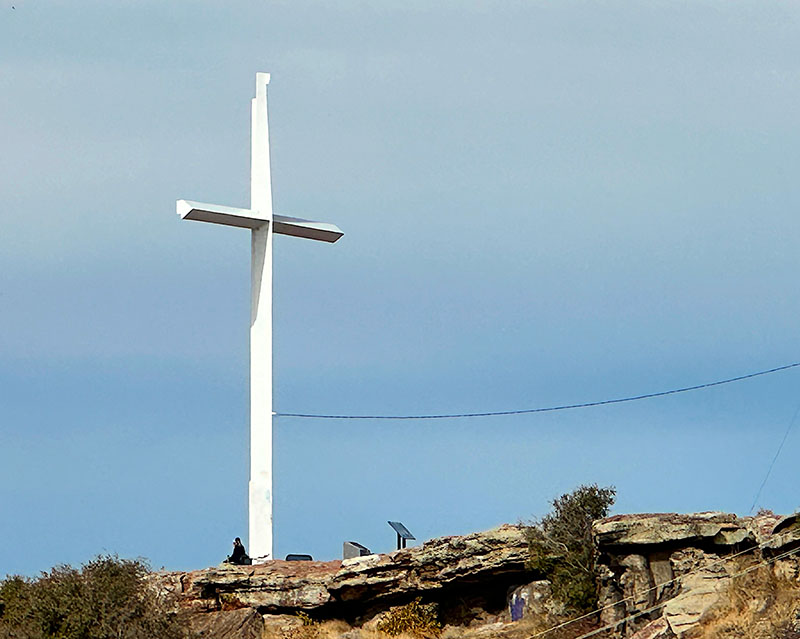
Crows at sunrise.
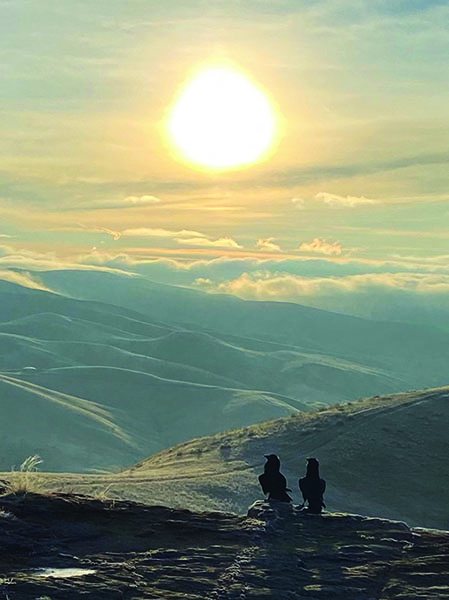
John Platt negotiates a thin crack on a Table Rock climb, 1970s. Bob Boyles.
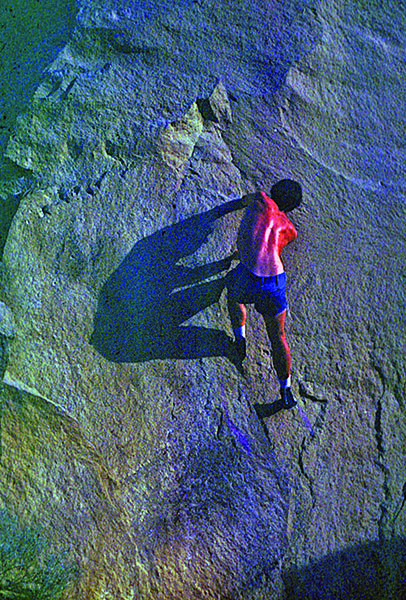
Laurie Durocher looks over the Treasure Valley from Table Rock on a January morning.
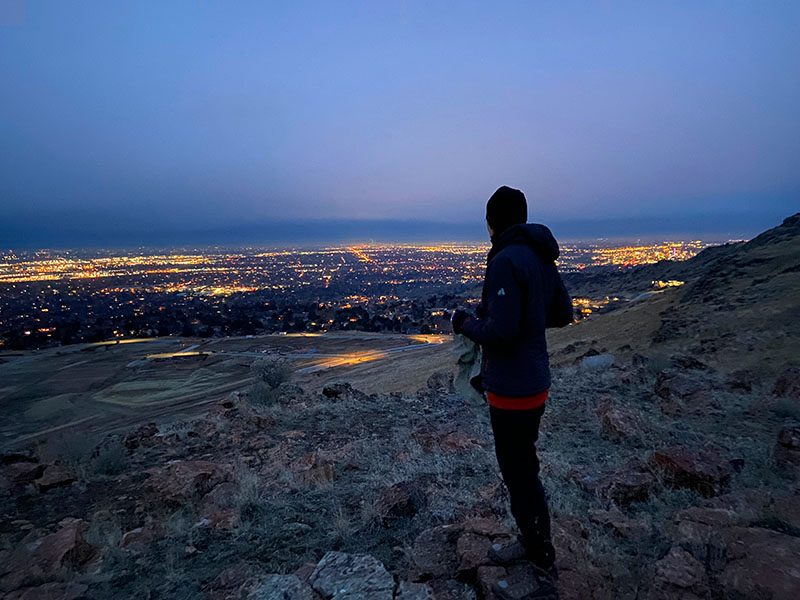
Mike Weber on a difficult route in the 1970s. Bob Boyles.
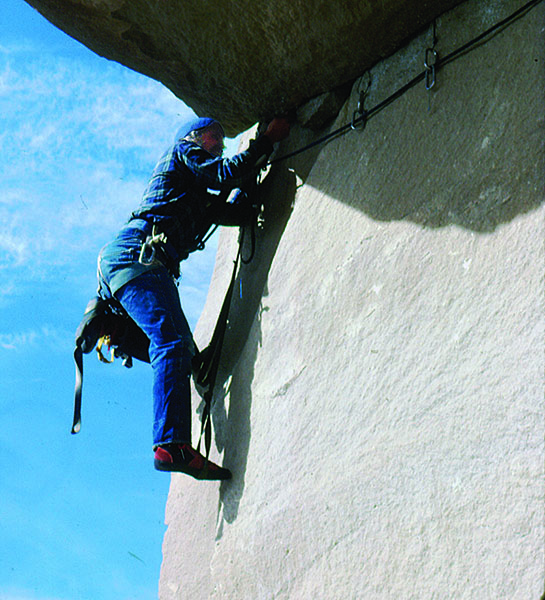
Art atop the rock.
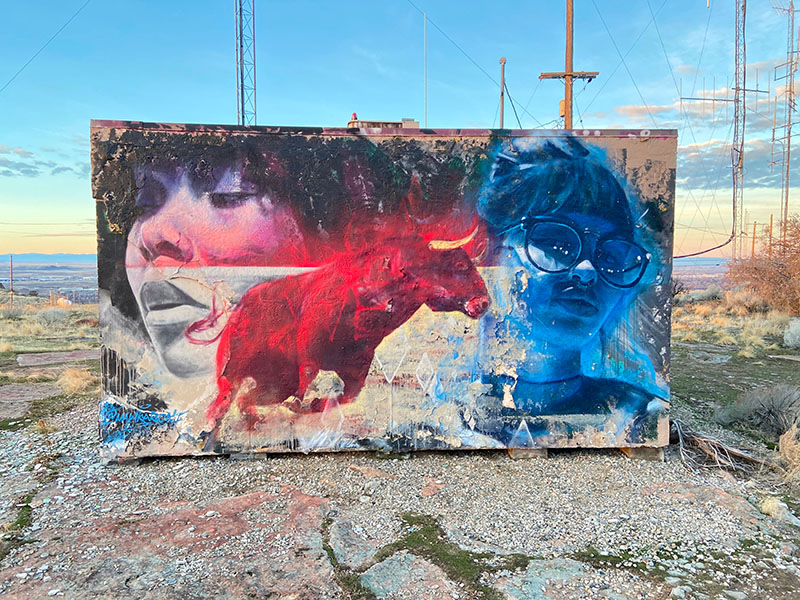
It's an informal museum up there.
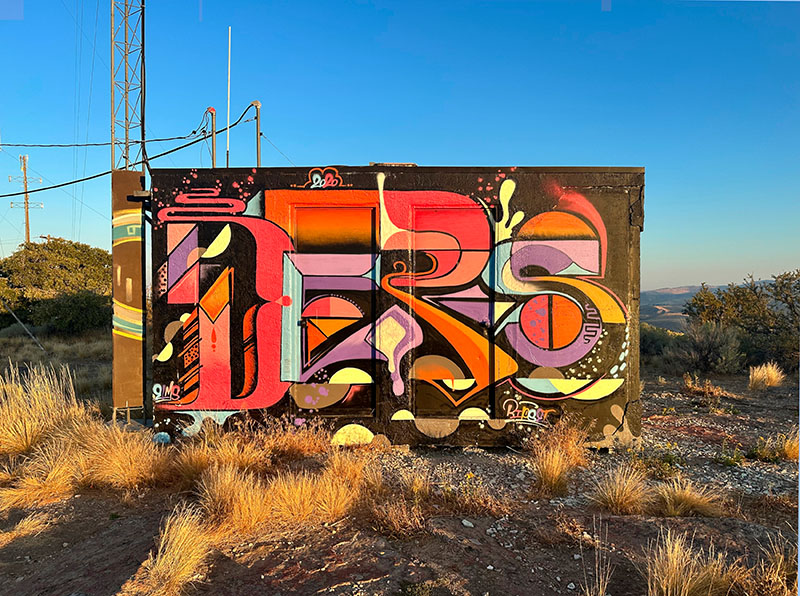
The quarry in 2022. Laurie Durocher.
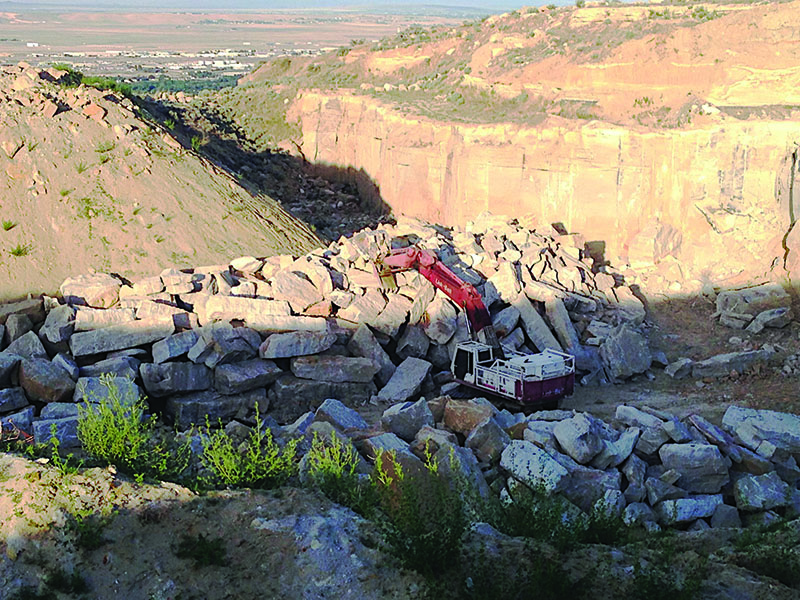
Climbing the rock on a snowy day.
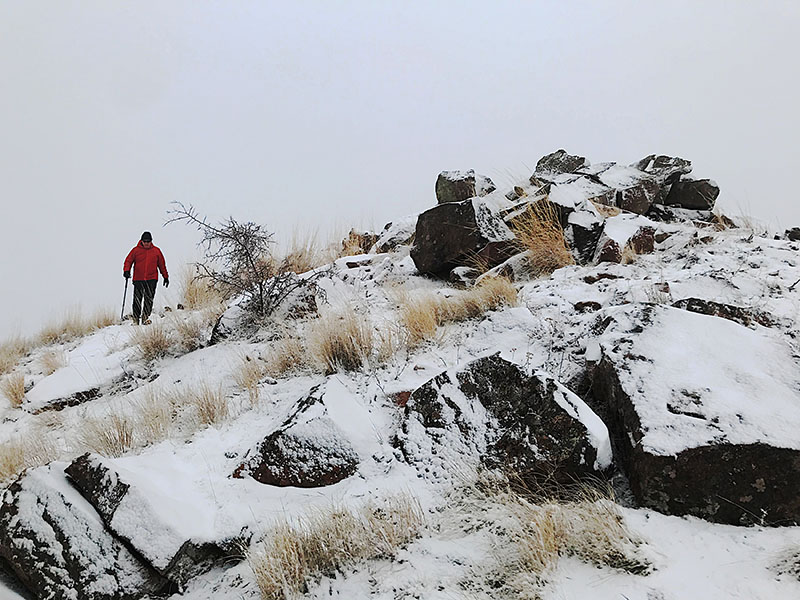
Sunrise during a hike. Laurie Durocher.
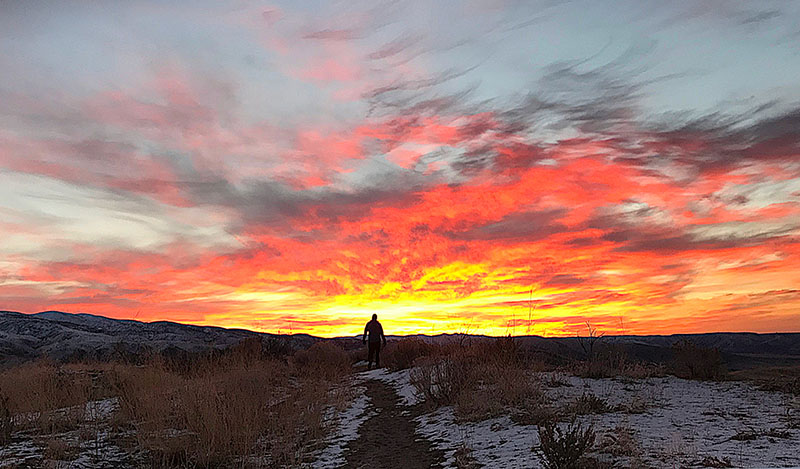
Wildflower near the rock.
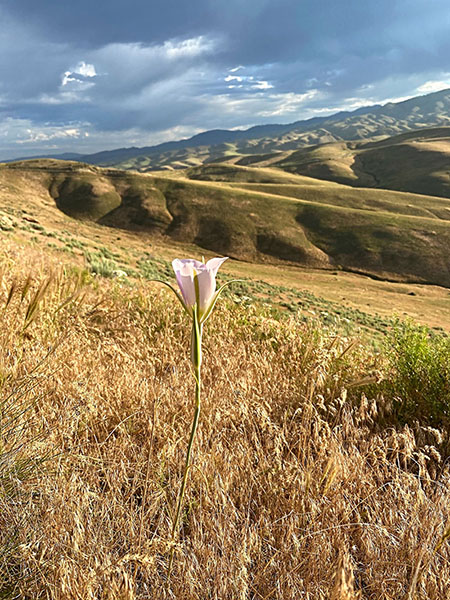
The summit is festooned with electronic communications installations, a rock quarry has existed on top for decades, and there is the towering Christian crucifix. Until the road to Table Rock was closed, many residents drove their out-of-town visitors to the top, where the sweeping view no doubt convinced a number of them to move to the valley.
Its sandstone top was once the bottom of Lake Idaho, now long gone. The formation’s rock is formed by sand that was cemented together by silica-rich hot water, which percolated up through faults and coursed through the lake’s sand. This process occurred from three million to eight million years ago. If you look south from Table Rock to the distant Owyhee Mountains and envision that entire area filled with water, you’ll get a notion of the ancient lake’s immensity. Sandstone was mined in a number of places along the base of the foothills soon after Boise was founded in 1863 but it did not occur on Table Rock until 1892, when the Jellison Brothers started developing a quarry near the summit. To mine the quarry, they had to build an access road and figure out some way to get the stone off the mountain. The first rock was dragged off by horse-drawn sleds.
The Jellison Brothers sold the quarry to the Capitol Building Commission in 1906. The commission’s purchase was to ensure that the stone used to construct the Idaho Capitol building would be of consistent quality. Over the years, Table Rock sandstone would be used in the construction of many buildings, including the Emmanuel Lutheran Church, Bown House, St. Michael’s Episcopal Church, the Union Block, Boise City National Bank, the United States Assay Office, Temple Beth Israel, the Borah Building, and St. John’s Cathedral. The stone was also shipped by rail to many destinations. One account I read stated that Table Rock sandstone was incorporated into a building on the campus of Yale University in Connecticut.
Sometime in the 1940s, the quarry was abandoned and it wasn’t until the 1980s that mining resumed there. What was once the high point of Table Rock now has a large bite taken out of it. The quarry is surrounded by Ridge to Rivers trails and among the many interesting relics associated with the historical mining operation is the Tram Trail. Harry K. Fritchman, a former mayor of Boise, is credited with building a tram up to the quarry sometime around 1911 as a better method to transport sandstone. The tram utilized rails and gravity to move stone down the mountain. As one car laden with stone was lowered down the trail, it would pull an unloaded car up the hill. The tram ended next to the river where the sandstone could be loaded onto railroad car flatbeds. Today the tram route, devoid of the rails and cables, forms a prominent scar on the southeast side of Table Rock. The Tram Trail comprises a steep grade that will put your lungs and muscles to the test if you hike up it.
At the Rock’s base is one of the most famous beneficiaries of the quarry, the Old Idaho State Penitentiary. In 1870, two decades before Idaho became a state, the Territorial Prison started with a single cell. Later, the cell blocks were surrounded by seventeen-foot walls of sandstone quarried on Table Rock by the prisoners. While it’s not clear how much quarry work was actually done by inmates, they evidently also quarried some rock for use in the prison buildings. Some officials reportedly wanted the inmates rather than a private contractor to mine the rock for the State Capitol building on the grounds that it would save money. That didn’t happen, perhaps because it was dangerous work. At least two inmates, John Stewart and William Maney, were killed as a result of a delayed explosion. The prison closed in 1973, and is now the home of a botanical garden as well as a destination for tourists who want to learn about the harsh conditions the inmates endured, and for fans of famed musicians who entertain on the prison grounds each summer.
The most popular route to the summit starts behind the old penitentiary. The trail, which is well-worn and wide, climbs steeply to a broad flat sagebrush-covered bench halfway to the summit. From the bench the trail climbs straight to the base of Table Rock’s cliffy rampart. The trail then goes through two segments of switchbacks to the top. Halfway up, several interpretive displays provide a recap of the area’s geological history. On many mornings, the line of hikers on this trail reminds me of religious penitents making a pilgrimage to the peak’s summit.
I occasionally encounter my friend Bob Boyles on the trail. Bob is the primary authority on the Rock’s history as a training ground for many outstanding Boise mountaineers. He was hiking and exploring Table Rock when he was only eleven years old, before he turned to mountain-climbing. He and his friends learned the intricacies of rock-climbing as youngsters who climbed and rappelled on the quarry’s walls before graduating to the big mountains, where they established impressive technical climbing routes such as their death-defying route up the vertical north face of Mount Breitenbach in the Lost River Range.
Bob explained to me that Frank Florence, co-founder of Boise’s earliest climbing shop, which was called Sawtooth Mountaineering, told him, “I think the spirit of the Boise climbing community of the 1970s was special. It was a fairly small group of people, a tight enough circle that we all knew one another to some degree. And there was real talent there.” Florence taught many of these climbers through regular climbing classes on Table Rock.
In 1975, Florence explained to an Idaho Statesman reporter, “The thirty-to-forty-foot walls at Table Rock serve as a sort of nursery for beginning climbers. The convenient old quarry contains plenty of sandstone for bouldering and difficult but close-to-the-ground maneuvering.” In addition to Bob Boyles, the list of Table Rock climbing alumni is a Who’s Who of noted climbers, including but not limited to: John Platt, Tom McLeod, Charlie Crist, and Mike Weber. Famed British climber Doug Scott, who along with Dougal Haston made the first ascent up the southwest face of Mount Everest, climbed at Table Rock. Others from outside Idaho who are well-known in the climbing world and who have surmounted the Rock include: John Gill, Dan McHale, Ted Thompson, Bob Jahn, Todd Skinner, and Pete Takeda.
After sandstone mining resumed at the quarry in the 1980s, it impacted the Table Rock climbing routes. Nevertheless, you can still occasionally find people practicing bouldering and learning to rappel on the Rock. Recently, thanks to the work of Boise’s Ridge to Rivers program, the Table Rock area has been taken over by hikers, runners, and mountain bikers. The COVID lockdown brought an influx of new visitors to the trails and in the summer it’s now not uncommon to encounter thirty or more people ascending them in the early morning light.
A few years ago, the road to Table Rock was closed in an effort to curb recurrent vandalism. The most prevalent vandalism was graffiti although of course not all graffiti artists are vandals. Several of the buildings that are part of the communications installations are decorated with wonderful paintings, which I think of as the Table Rock Museum of Modern Art. For me, the paintings alone make the energy needed to climb to the summit well worth its expenditure.
I still climb big mountains but it’s hard to beat hiking in Table Rock country every morning I can. Throughout the last two years, we hiked over Table Rock and Homer’s Nipple more than four hundred times. There is no long drive: we simply walk out of our house and amble to the trailhead. Laurie and I walk in all seasons and in all sorts of weather. I’d say there are three things to keep in mind if you want to stretch your legs in the foothills. First, Table Rock and environs occupy an urban-nature interface. Over the years, I have encountered coyotes, fox, wolves, elk, deer, badgers, marmots, rabbits, rattlesnakes, gopher snakes, crows, ravens, meadowlarks, robins, hawks, and even a bald eagle while hiking on its slopes. Second, the hills can be hazardous to safely traverse in summer, because of the heat and exposure. Third, the trails can be muddy in winter and spring, when people should stay off them unless they are frozen.
Laurie and I got in the habit of starting before sunrise to avoid heat in the summer and to cross the trails before the ground thaws in early spring and winter. The Ridge to Rivers System has a Facebook page that’s an excellent resource for current trail conditions during winter months.
The quarry at Table Rock and some of the other countryside are privately owned. Hikers should respect “No Trespassing” signs and be aware that the area around the cross on the summit is closed from sunrise to sunset.
This content is available for purchase. Please select from available options.
Register & Purchase Purchase Only
Register & Purchase Purchase Only

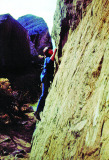
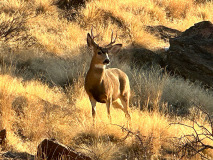
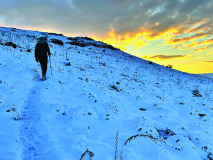
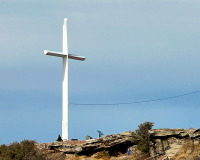
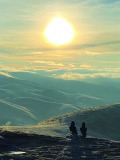
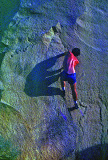
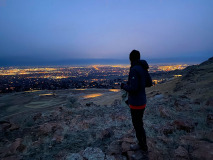
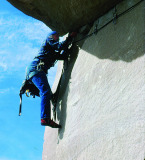
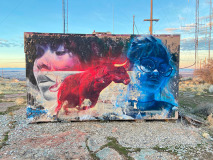
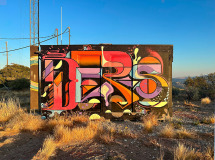
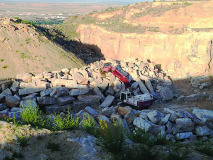
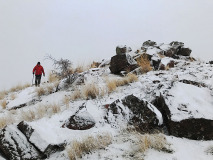
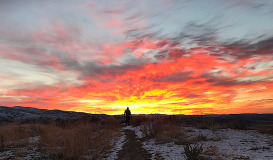
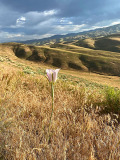
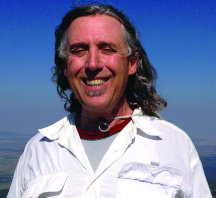
2 Responses to Morning Walks
Sue Treinen -
at
Thanks Tom for a great article about Tablerock.
Kay -
at
Pete Takeda lived in that Wise-founded subdivision as a teen and it is likely, I believe, that one of the reasons Pete ended up a climber was the proximity of the Quarry to WSM and its popularity with a number of Mesa teens back in the late 70s early 80s. So though he may live outside Idaho, he is very much from that Quarry and Boise.